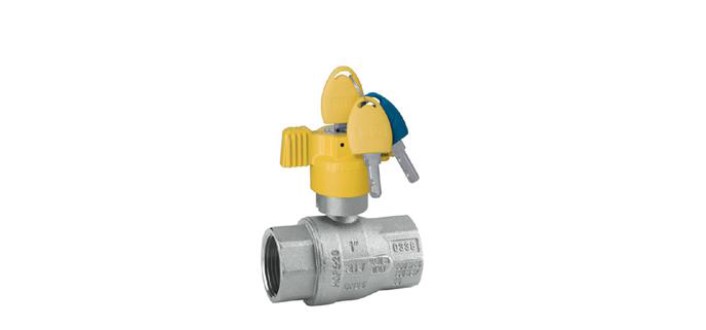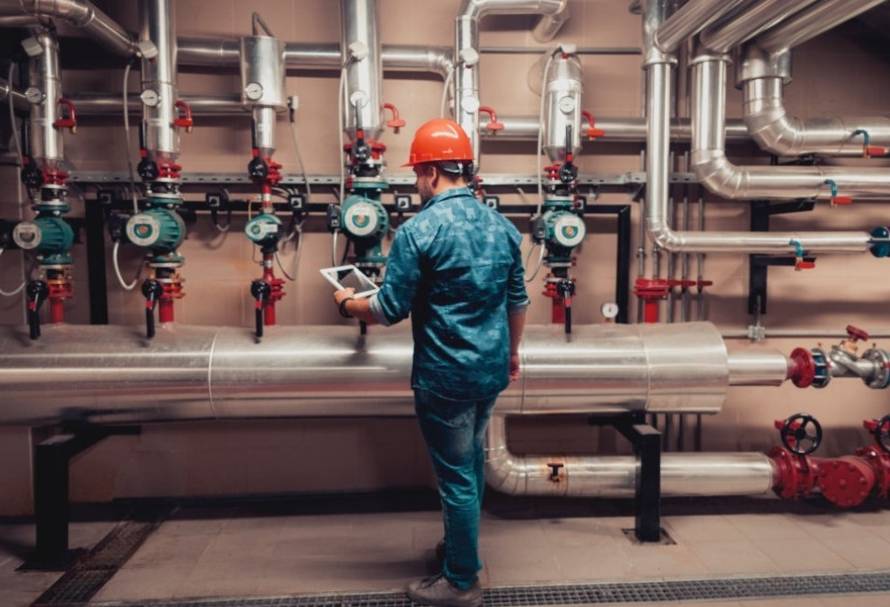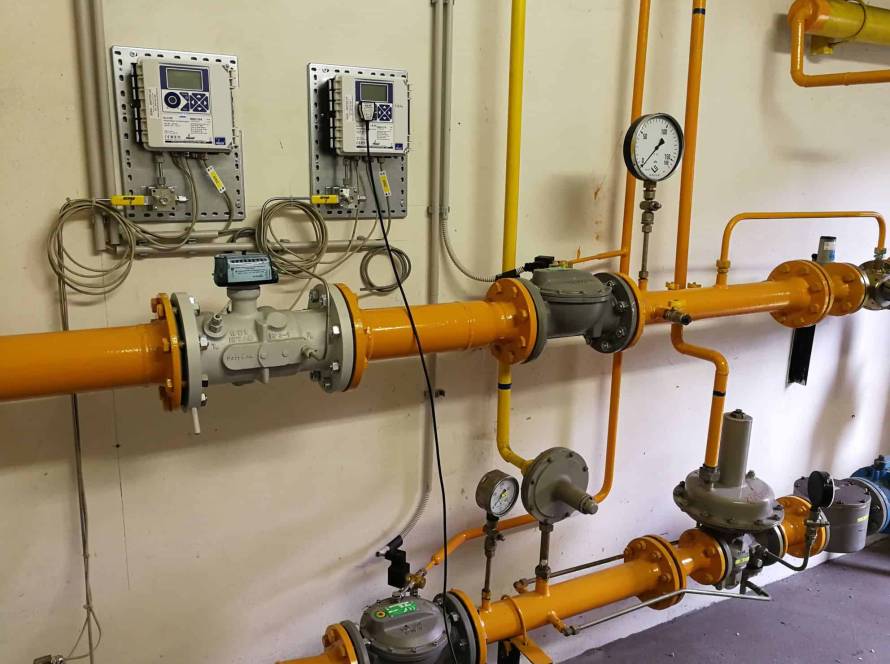Types of Valves Used in the Oil and Gas Industry

flow of gases and liquids. These flow control devices help maintain system integrity, prevent backflow, regulate pressure, and optimize the refining process of crude oil.
Valves are available in different materials (plastic or metal) and configurations to suit various operational conditions, including high-pressure environments, corrosive substances, and extreme temperatures.
In this article, we discuss the most commonly used valves in the oil and gas industry and their applications.
1. Plug Valves
Plug valves utilize a cylindrical or conical plug that rotates inside the valve body to start or stop fluid flow. These valves provide a simple, cost-effective solution for flow control.
Advantages:
Simple design, quick operation, low maintenance
Disadvantages:
Reduced port size, minimum resistance to flow
Common Types
Lubricated plug valves
Use grease or sealant to reduce friction and wear.
Non-lubricated plug valves
Feature a sleeve or liner for low-maintenance performance.
Centric plug valves
Designed for precise control in low-pressure applications.
Expanding plug valves
Provide a bubble-tight seal for zero leakage applications.
2. Bellow-Sealed Valves
Bellow-sealed valves are commonly made from stainless steel and are used in applications requiring zero leakage. They operate through axial movement of the valve stem and feature a bellows assembly that prevents fluid from escaping.
Common Types
Forged bellows
Constructed from a thin foil in tube form.
Welded bellows
Created by welding thin metal plates together for increased durability.
3. Ball Valves
Ball valves are widely used for isolation applications, featuring a rotating ball with a bore that allows fluid to flow when aligned with the pipeline.
Advantages
Quick operation, low pressure drop, bubble-tight shut-off, bidirectional flow
Disadvantages
Limited temperature resistance based on seating material
4. Gate Valves
Gate valves operate by lifting or lowering a gate inside the valve body, allowing for an unobstructed flow when fully open. They are primarily used for on/off control rather than throttling.
Advantages
Straight-through flow, minimal pressure drop
Disadvantages
Slow operation, requires more space, not ideal for tight shut-off
Common Types
Slab gate valves
Provide a flat gate for full-bore flow.
Parallel slide gate valves
Reduce wear by using two parallel gates.
Knife gate valves
Used for slurry and viscous fluids.
Wedge gate valves
Designed for high-pressure and high-temperature applications.
5. Check Valves (Non-Return Valves)
Check valves prevent backflow in pipelines by allowing fluid to flow in only one direction. These valves operate automatically without external control.
Common Types
Swing check valves
Use a hinged disc to allow or block flow.
Piston check valves
Utilize a piston mechanism to prevent reverse flow.
Ball check valves
Feature a ball that seals the valve under backflow conditions.
Tilting disc check valves
Offer quick response times for critical applications.
6. Pressure Seal Valves
Pressure seal valves are designed for high-pressure applications above 170 bar. These valves use pressure-assisted sealing to enhance durability and reduce leakage risks.
7. Butterfly Valves
Butterfly valves operate via a rotating disc that regulates fluid flow. They are commonly used in large-diameter pipelines.
Advantages
Compact, lightweight, simple operation, low-pressure isolation
Disadvantages
Partial obstruction in flow even when fully open
8. ORBIT Valves
ORBIT valves are ideal for high-temperature applications (-104°C to 427°C), making them suitable for mole sieve dryers and hot oil systems. They provide a friction-free operation that extends their service life.
9. Solenoid Valves
Solenoid valves are electromechanically operated and use an electromagnetic coil to control fluid flow. They are widely used in automation and remote control applications in the oil and gas industry.
Advantages
Fast operation, minimal methane emissions, suitable for hazardous environments
Applications and Industries
Gas valves are used across various industries, including:
- Aerospace
- Agricultural
- Automotive
- Commercial
- Construction
- Cryogenic
- Fire safety
- Food processing
- Flood control
- Irrigation
- Maritime
- Medical
- Mining
- Petroleum
- Power generation
- Pulp and paper
- Semiconductor manufacturing
How to Choose the Right Valve for Oil and Gas Applications
Selecting the appropriate valve for your oil and gas operations is crucial for efficiency, safety, and longevity. Various factors must be considered to ensure that the valve meets operational needs and complies with industry standards.
1. Understand the Application and Function
Each valve type serves a different purpose. Understanding how the valve will function in your system will help you choose the right one. Common valve functions include:
Flow Control
Ball, butterfly, and globe valves help regulate flow.
Isolation and Shut-Off
Gate, ball, and plug valves are ideal for stopping flow completely.
Pressure Control
Pressure relief and pressure seal valves manage system pressure.
Non-Return (Preventing Backflow)
Check valves ensure flow only in one direction.
High-Temperature or High-Pressure Applications
Pressure seal and ORBIT valves handle extreme conditions.
2. Consider the Fluid Type
Different fluids require different valve materials to prevent corrosion and ensure durability. The fluid type in your system influences valve selection:
Corrosive fluids (e.g., acids, ammonia, chlorine)
Stainless steel, Hastelloy, or titanium valves.
High-pressure gases (e.g., methane, hydrogen, oxygen)
Pressure seal valves or forged metal valves.
Heavy crude or slurries
Knife gate or plug valves for effective flow control.
High-temperature applications
Special alloys like Inconel or Stellite-coated valves.
3. Determine the Required Pressure and Temperature Rating
Valves must withstand the maximum operating pressure and temperature in the system:
Low-pressure systems
Ball and butterfly valves.
High-pressure systems (above 1500 psi)
Gate, globe, and pressure seal valves.
Extreme temperatures (-100°C to 500°C)
ORBIT valves or high-performance metal-seated valves.
4. Check Industry Standards and Certifications
Compliance with industry standards ensures reliability, durability, and safety. Look for:
- API (American Petroleum Institute) Standards
- ASME (American Society of Mechanical Engineers) Standards
- ISO (International Organization for Standardization) Certifications
- NACE (National Association of Corrosion Engineers) Compliance for Corrosive Environments
- Fire-safe certification (e.g., API 607 for fire-safe valves)
5. Consider the Valve Actuation Method
The method of operating the valve plays a crucial role in efficiency:
Manual (Handwheel or Lever)
Cost-effective and simple for low-frequency operations.
Pneumatic Actuated
Uses air pressure for remote operation.
Hydraulic Actuated
Uses fluid pressure for high-force applications.
Electric Actuated
Automated systems using electric power for precision control.
Solenoid Operated
Electromagnetic control for quick response.
6. Evaluate Space and Installation Constraints
Compact spaces
Butterfly and ball valves are ideal due to their small size.
Underground pipelines
Resilient-seated gate valves work well for buried applications.
Easy maintenance access
Consider top-entry valves like ORBIT valves.
7. Determine the Flow Characteristics
Linear flow control
Globe valves for precise throttling.
Quick shut-off
Ball valves or quarter-turn valves.
Minimal flow resistance
Gate and check valves for low pressure drop.
8. Cost vs. Longevity
Upfront cost
Butterfly and ball valves are more affordable.
Long-term durability
High-quality gate and globe valves last longer with proper maintenance.
Maintenance costs
Some valves, like plug valves, require regular lubrication.
9. Special Considerations for Offshore and Harsh Environments
For offshore drilling, refineries, or chemical plants, consider:
Corrosion-resistant materials
Duplex stainless steel or Monel.
Explosion-proof actuation
If installed in hazardous areas.
Heavy-duty coatings
Epoxy-coated valves for saltwater resistance.
The Bottom Line
The demand for oil and gas continues to rise, making high-quality valves essential for safety, efficiency, and environmental protection.
As global regulations become stricter due to climate concerns, selecting the right valve is crucial in reducing methane emissions and optimizing operational performance.
For expert guidance on selecting the right valve for your application, consult a trusted industry supplier.



